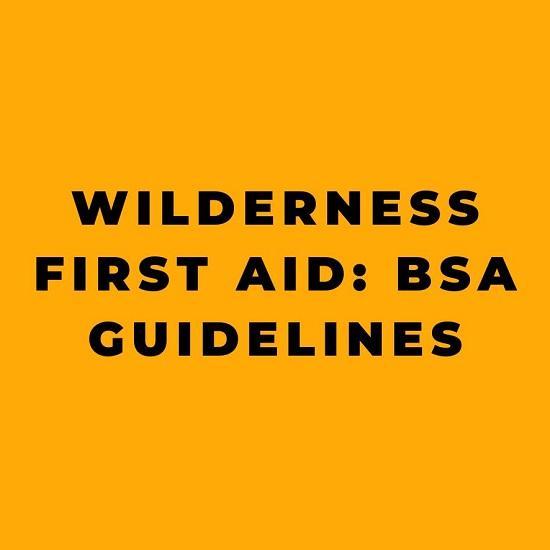Wilderness First Aid (WFA) is a crucial set of skills for anyone venturing into the outdoors. Whether you are a scout, hiker, backpacker, or outdoor enthusiast, having the knowledge and ability to effectively address injuries, illnesses, or emergencies outside of modern facilities can be a matter of life and death. In this comprehensive guide, we will delve into the BSA guidelines for Wilderness First Aid, covering the essential skills, training, scenarios, resources, and more.
Defining Wilderness First Aid: BSA Guidelines
Wilderness First Aid, as defined by the Boy Scouts of America (BSA), refers to the prevention, assessment, and treatment of medical emergencies in remote environments, where professional medical assistance may be hours or even days away. The BSA has developed a specific curriculum for Wilderness First Aid, tailored for Scouts and Scouters, to ensure that they are equipped to provide assessment and treatment miles away from advanced care. The BSA’s WFA course is a 16-hour certification suitable for participants aged 14 and older, and it emphasizes the importance of safety and control in urgent situations.
Background and Importance of Wilderness First Aid
The wilderness presents a myriad of potential risks, including but not limited to, injuries from falls, burns, bites, or cuts, as well as illnesses such as heat exhaustion, allergic reactions, or altitude sickness. In these remote environments, the ability to administer proper first aid can have a significant impact on the outcome of emergencies, injuries, and illnesses. Therefore, acquiring the skills and knowledge of wilderness first aid is crucial for anyone who spends time in the great outdoors.
BSA Wilderness First Aid Curriculum
The BSA’s WFA curriculum covers a range of core and elective modules, scenarios, and essential skills. The core modules include patient assessment, chest injuries, shock, head and spinal injuries, bone and joint injuries, wounds and wound infection, allergies and anaphylaxis, and scenarios. The elective modules encompass abdominal problems, hypothermia, heat-related illnesses, lightning, altitude illnesses, submersion, and wilderness first-aid kits. The scenarios provided in the curriculum enable participants to apply their knowledge and skills in a controlled setting, receiving immediate feedback and enhancing their learning experience.
BSA Wilderness First Aid Scenarios
The BSA WFA scenarios are an integral part of the training, offering practical application of skills in simulated emergency situations. The scenarios cover a wide range of medical emergencies, such as abdominal problems, allergy/anaphylaxis, heart attack, heat-related illness, respiratory distress, snakebite, wound with infection, altitude illness, deep wound with severe bleeding, diabetic illness, respiratory distress, poison ivy, and seizure. These scenarios provide participants with the opportunity to practice patient assessment, treatment, and decision-making, thereby preparing them to respond effectively to real-life wilderness emergencies.
BSA Wilderness First Aid Instructor Resources
The BSA has developed resources to assist WFA instructors in delivering effective training. Whether teaching the WFA blended or traditional 16-hour course, instructors can access a range of materials to enhance their classes. The instructor resources provide important tips, techniques, and guidelines for both new and seasoned instructors, ensuring that they can deliver high-quality wilderness first aid training to their participants.
Preparation and Prerequisites for Wilderness First Aid
Proper preparation is essential for wilderness first aid. This includes assembling a well-stocked travel first aid kit containing essential items such as disinfectants, bandages, tweezers, and medications. Additionally, participants are required to be at least 14 years old and complete a CPR and AED certification course led by a nationally recognized provider as prerequisites for the BSA WFA course. Basic first-aid training is helpful but not mandatory, making WFA accessible to a wide range of individuals seeking to enhance their outdoor safety skills.
Finding a BSA-Approved WFA Course
Individuals can find BSA-approved WFA courses by contacting their local council or district, or visiting the BSA website. Additionally, courses may be available through the American Red Cross (ARC) or the Emergency Care & Safety Institute (ECSI), both of which have authorized-provider training agreements with the BSA. These courses provide participants with the opportunity to acquire essential wilderness first aid skills at reduced fees, making it more accessible for scouts and outdoor enthusiasts.
Importance of Wilderness First Aid Beyond the Backcountry
While WFA is primarily associated with remote wilderness environments, its value extends beyond the backcountry. The knowledge and skills acquired in WFA are equally relevant in urban areas during natural disasters, mass casualty events, or situations where emergency services may be strained. Therefore, WFA is not only essential for outdoor enthusiasts but also for individuals seeking to be prepared for emergencies in various settings.
Summary and Final Thoughts
In conclusion, Wilderness First Aid is a critical set of skills for anyone venturing into the outdoors, and the BSA has developed comprehensive guidelines and resources to ensure that scouts, scouters, and outdoor enthusiasts are equipped to handle medical emergencies in remote environments. By understanding the BSA WFA curriculum, scenarios, instructor resources, and prerequisites, individuals can effectively prepare themselves to provide assessment and treatment miles away from definitive medical care. The practical application of WFA skills through scenarios and the accessibility of BSA-approved courses further enhance the learning experience. Ultimately, the knowledge and skills acquired through Wilderness First Aid can be life-saving, making it an indispensable component of outdoor safety and preparedness.










